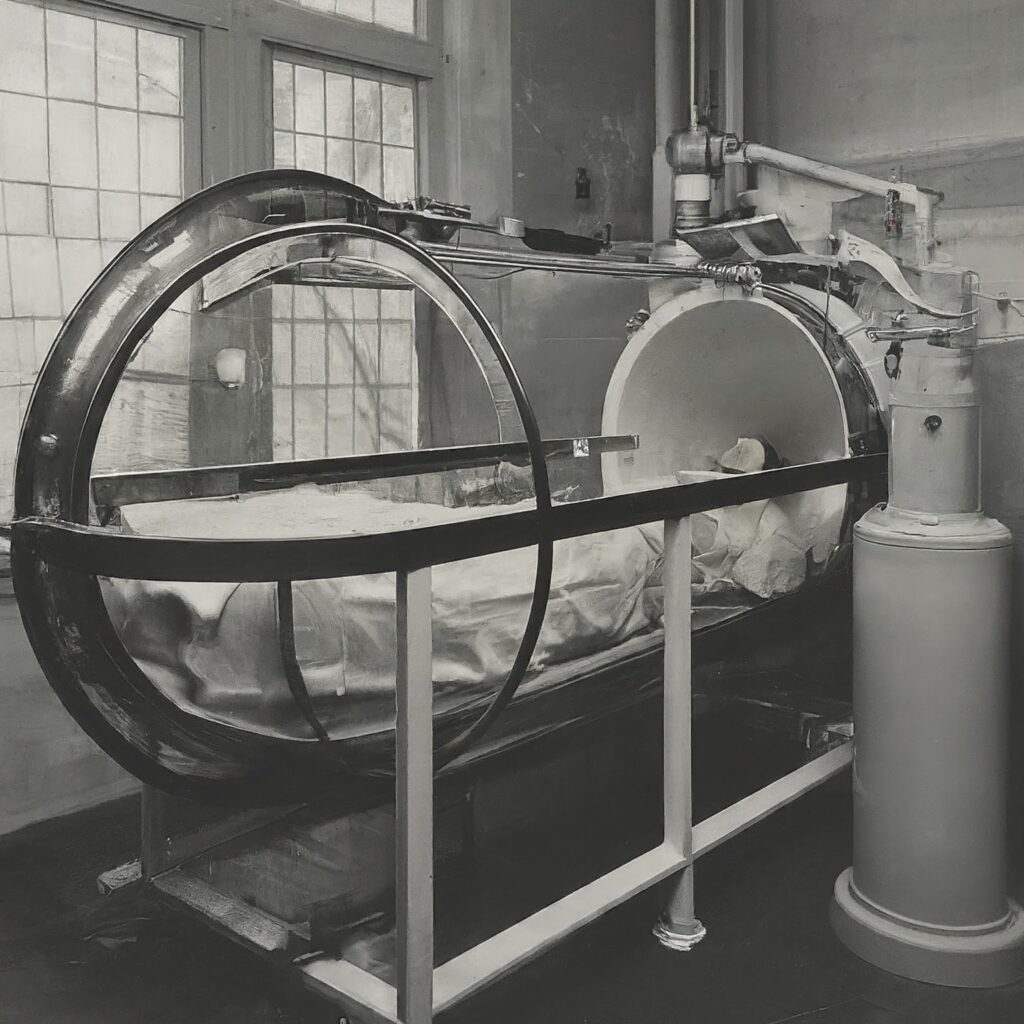Introduction: In the annals of medical history, there are inventions that stand as monuments to human ingenuity, perseverance, and compassion. Among these, the iron lung—a mechanical respirator—holds a unique place. Developed in response to the devastating polio epidemics of the early 20th century, the iron lung revolutionized the treatment of respiratory paralysis, saving countless lives and altering the course of medical technology forever.
A Crippling Disease and a Race for a Solution
Polio, a crippling and often fatal infectious disease, ravaged communities throughout the first half of the 20th century. The virus could attack the nervous system, leading to paralysis, including paralysis of the diaphragm and intercostal muscles – the very muscles responsible for breathing. For these patients, each breath became a fight for survival.
In 1927, a glimmer of hope emerged at Harvard University. Philip Drinker and Louis Agassiz Shaw, inspired by an earlier invention known as the Drinker respirator, designed the first iron lung. This machine was essentially a large metal tank with a sealed door. The patient lay inside, with their head protruding through a special opening. A powerful pump would then rhythmically change the air pressure within the tank, creating a negative pressure that mimicked the natural process of inhalation and exhalation.
A Lifesaving Machine, But With Limitations:
The iron lung was a revolutionary invention. It provided critical respiratory support for polio patients, allowing them to breathe and survive even when their own muscles failed. This literally bought them time, allowing their bodies to potentially recover from the effects of the virus.
However, the iron lung was not without its limitations. The machines were large, cumbersome, and noisy. Patients could spend years confined within them, unable to move freely. Daily activities like eating and personal care became complex tasks requiring assistance. Additionally, iron lungs were expensive to maintain and required a constant supply of electricity, which wasn’t always readily available in all regions.

How It Works:
The mechanics of the iron lung are elegantly simple yet remarkably effective. A motor-driven pump regulates the airflow in and out of the chamber, while a series of valves control the pressure within. When the pump lowers the pressure inside the iron lung, the patient’s chest expands, drawing air into their lungs. Conversely, when the pressure increases, the chest cavity contracts, expelling air from the lungs. This rhythmic process mirrors the natural mechanics of breathing, allowing patients to receive adequate oxygenation and ventilation.
Impact and Legacy:
The introduction of the iron lung marked a turning point in the treatment of respiratory paralysis, offering hope to countless individuals stricken by polio and other neuromuscular disorders. Hospitals across the globe swiftly adopted the device, establishing specialized polio wards equipped with rows of iron lungs to accommodate the influx of patients during epidemic outbreaks.
Beyond its immediate medical impact, the iron lung spurred advancements in mechanical ventilation and respiratory therapy, laying the groundwork for modern intensive care units and life support systems. Its design principles influenced subsequent generations of ventilators, leading to smaller, more portable devices capable of delivering precise respiratory support to patients with a diverse range of respiratory conditions.
Today, iron lungs are primarily found in museums, serving as a reminder of a time when a terrifying disease could steal your breath away, and a testament to the ingenuity that emerged to fight back.

The End of an Era:
With the development and widespread administration of the polio vaccine in the mid-20th century, the incidence of polio plummeted dramatically, relegating the iron lung to the annals of medical history. However, its legacy endures as a testament to human ingenuity and the power of innovation to confront seemingly insurmountable challenges.
Conclusion:
The iron lung stands as a symbol of resilience in the face of adversity—a reminder of our capacity to harness technology for the betterment of humanity. From its humble beginnings as a response to a public health crisis, it evolved into a cornerstone of modern medicine, shaping the trajectory of respiratory care for generations to come. As we reflect on its legacy, let us not only honor the pioneers who brought this remarkable device to life but also rededicate ourselves to the pursuit of innovation and compassion in the service of improving lives worldwide. ##


